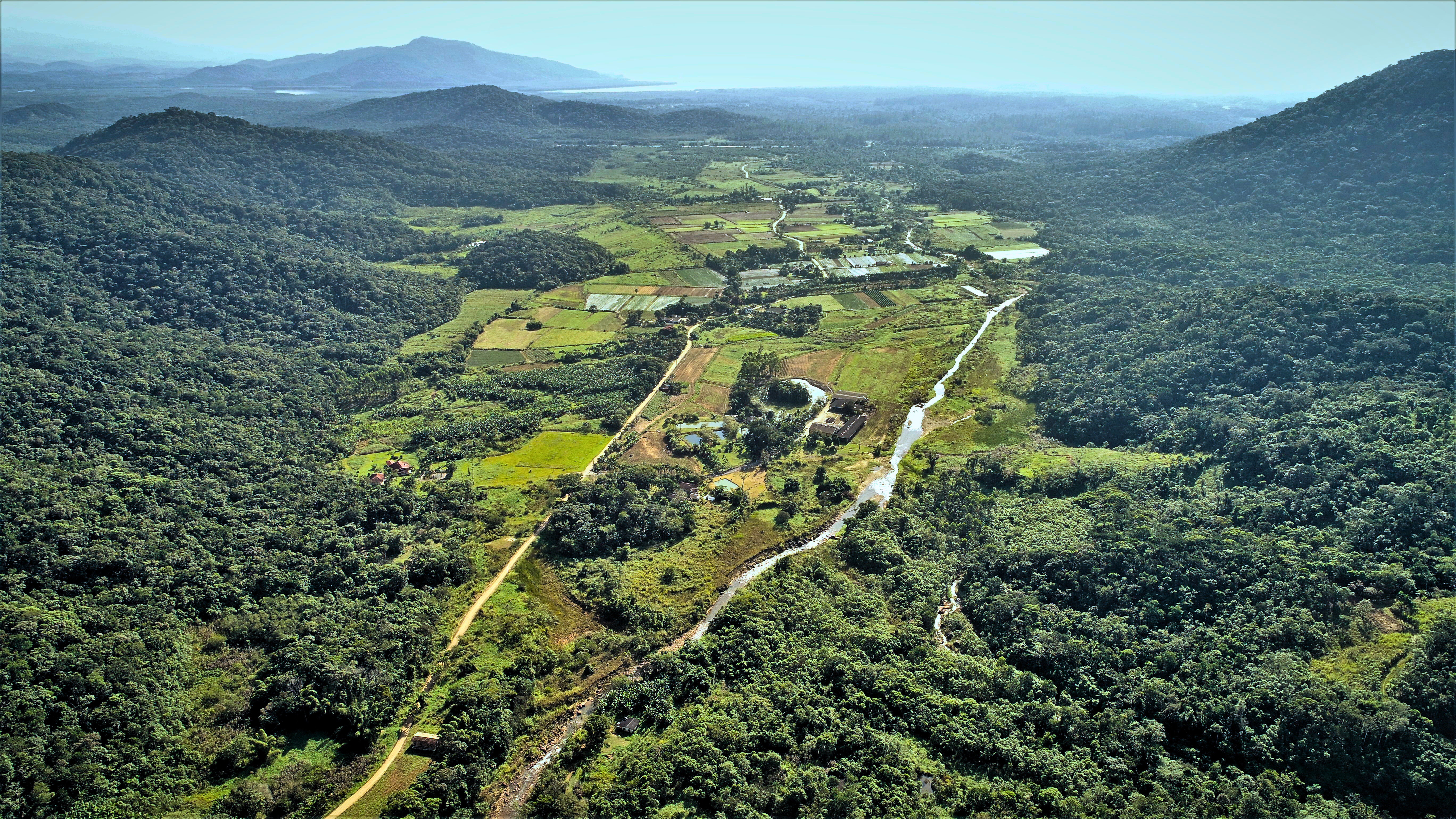Research conducted by UFPR in partnership with TCP reveals that the amount corresponds to 40 years of spending on sediment removal in the Jacareí River basin due to erosion and landslides in extreme events.
The Federal University of Paraná (UFPR), in partnership with the company that manages the Paranaguá Container Terminal (TCP), released the results of five years of research involving the Jacareí River, on the state coast. The event, held this Wednesday (02) at the Museum of Archeology and Ethnology of UFPR, brought together researchers, the Public Ministry of Paraná, the Chico Mendes Institute for Biodiversity Conservation, port representatives, managers of the region’s conservation units and teams from the municipalities of Paranaguá and Morretes.
TCP’s institutional superintendent, Allan Chiang, explains that this is a conditional project of the Term of Commitment signed between TCP and Paranaguá City Hall. “We seek to strengthen socio-environmental actions and stimulate academic research. The work carried out by UFPR is one of them, as it brings sustainable solutions to local problems, which benefits not only the port network but the entire community. The landslides are examples of how the Jacareí River and the other basins of the Serra do Mar can impact the life of the coastal community. We seek to encourage the analysis of these changes and how forest restoration can avoid this type of problem for society and nature”.
The request of the Department of Environment of the city of Paranaguá occurred after landslides and the collapse of the bridge on BR-277 in March 2011. UFPR’s technical coordinator, geographer Marcelo Hung, explains that “in 24 hours, the basin received 8.5 times more sediment than would be produced in a year, according to a study by Otacílio, who is a researcher at LAGEAMB, UFPR. It was the largest precipitation event in the area, resulting in deaths and destruction of homes. The research brings solutions to landslides, which can bring more safety to the population and savings to public coffers “.
Rodrigo Delonga, a forestry engineer at the secretariat, explains that in addition to the landslides, residents were left without treated water. “Due to the rupture of water intake pipes, there was a shortage of water for the population’s consumption. Because of all this destruction, it was essential to assess the region’s watersheds to prevent new cases like this from happening.”
The result of the research carried out by the Laboratory of Geoprocessing and Environmental Studies (LAGEAMB) shows the advantages of forest restoration for the coastal community. “The stretch studied in the project encompasses the Atlantic Forest, which is similar throughout the Serra do Mar. This means that the research can provide solutions for other stretches of landslide, as was the case that occurred in November 2022, on BR-277, and generated blockages and congestion for several months”, says the geographer.
Project results
The Jacareí River basin is part of the Paranaguá Estuarine Complex (CEP) and the Serra do Mar complex. With a total area of 40 km², the river divides the cities of Morretes and Paranaguá and is among those that provide the most sediment to the estuary. The basin was the main scenario of the research, which began in 2019 and was carried out in three phases. In the first, the researchers carried out several socioeconomic surveys and priority areas for environmental recovery and conservation and were supported by Envex Engenharia e Consultoria for monthly measurements and continuous monitoring in the region, which continued until the end of the research.
From the second stage, the data were analyzed and a mathematical model was formulated to calculate the values of current and maintenance sediment production. The third stage includes the participation of economist Heitor Dellasta to analyze the results and the construction of two scenarios of changes in vegetation cover and land use: one with vegetation growth and the second without restoration and with the expansion of anthropogenic areas.
For three years, the researchers compared these two scenarios. In the first case, they noticed that the growth of vegetation along the bed of the Jacareí River retained the sediments, not allowing them to follow to the end. The reduction was 24% in sediment production compared to what is released today. In contrast, the other scenario showed a 30% increase in sediment accumulation compared to the current stage.
To remove this sediment, public agencies would spend approximately BRL 500,000 over 40 years. “Considering the period needed to build a mature forest, which is four decades for the Atlantic Forest biome, we analyzed the data collected and made a projection. We compared the two scenarios created, one with forest restoration and the other without, and we noticed that the cost for desilting was almost half a million reais more than if there had been an investment in restoring vegetation in the region”, explains Hung.
LAGEAMB emphasizes that the financial savings that the preservation of the Atlantic Forest offers are much greater than those addressed in the research. According to Marcelo Hung, “there are other ecosystem services provided by forests, which were not financially calculated in the research, such as: climate regulation, pollination, air and water quality control and public supply. We consider that the savings from the reduction in de-silting is only 3% to 10% compared to all these topics I have mentioned. If you include the other factors, the figure is even higher.”
Next steps for the community
According to the forest engineer of the Paranaguá Environment Secretariat, the next steps will be to analyze the results for a possible forest restoration on the site. The proposal is also to replicate the results obtained in the research with other basins. Delonga states that “today’s event was fundamental for us to dialogue with other institutions that can participate in local projects in the region, such as the restoration of the Jacareí River or the application of new studies on the financial advantages of preserving the Serra do Mar for our coast”.
Delonga explains that another advantage of the Jacareí Basin is that it is between two springs and can be used to supply communities. “But, for this, it is necessary to invest in care to reduce siltation in the region and this study will serve as a basis for this work”, he highlights.



